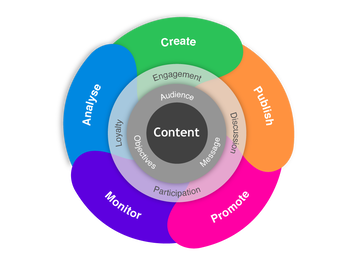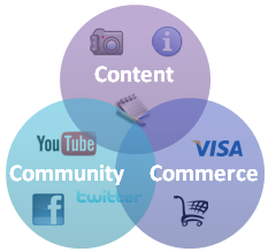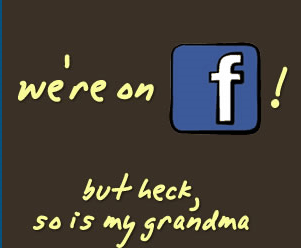
As customer centric digital marketing has improved with the help of new marketing technologies over the past few years, an important trend taking place in e-commerce is the way that effective digital marketers create a self-sustaining ecosystem in which consumers can thrive. This approach, often oversimplified under the umbrella term “social media marketing,” underscores the evolution of the customer journey online, and the close relationships between consumers, their like-minded peers, and the companies they do business with. I am referring to the ongoing convergence of the “three C’s:” robust consumer-oriented content, the communities that form around this content (and interests), and the commerce that comes out of these content-enabled communities. When these three C’s are well executed and in sync, the resulting business performance and value creation is greater than the sum of the parts – i.e. a “flywheel effect” is created.
Content – Compelling and relevant content is where it all starts, and what creates stickiness between brands and their customers; it’s the glue that facilitates modern customer engagement. Great content is the key to drawing in consumers and holding their attention on a subject that interests them. Content is often assumed to be social media posts, but can also come in the form of articles, blogs, infographics, podcasts, videos, e-magazines, and other multimedia experiences. Content allows marketers to inform about products and services, and the problems that they solve, but does it in a way that follows a narrative; it tells a story. The content serves to educate while enticing, in a way that is easy to consume and leaves the consumer wanting more.
Community - Around relevant and well-produced content, a community can then naturally form. This is key, even though building and nurturing communities is often a step that is overlooked when creating an online ecosystem. Fostering a community of like-minded, engaged people not only drives return traffic, but also promotes discussion and advice sharing, sparks new ideas, and creates a supportive environment of camaraderie. With an engaged community, the brand engagement is not just occurring between buyer and seller, but amongst all constituencies in the value chain. This is the scenario where marketing programs can really build its own momentum and scale – bolstering the flywheel effect. Most importantly, customers keep coming back to contribute user-generated content which helps build an ever-growing library of material, in turn helping with SEO. With this level of engagement, interest, and trust, the next natural step for the community is to consider buying appropriate goods and services aligning their interests. The buying experience just needs to be easy and consistent with the brand experience they have enjoyed thus far.
Commerce - The “store.” This is where it all comes together – where the community of customers with like-minded interests – having been informed and educated by the content provided on the site - happily and proudly make their purchases. Here efforts and resources that went into producing great content and nurturing a cohesive community are ultimately monetized. But beyond this, the commerce piece effectively completes and renews the cycle of engagement between brand and community members. Purchasers discuss their customer journey with the community, and provide reviews on their purchases – essentially becoming brand evangelists (if all goes well) and adding to the flywheel effect. Obviously, a great commerce layer requires intuitive UX, strong data security, and product merchandising that anticipates customer needs & concerns. Well-developed mar-tech helps make this happen more easily - putting the right product in front of the community at the right time – all while capturing essential data to improve and optimize the overall “ecosystem.” Also, the buying experience has to link back to the content and shared interests of the community. If executed well, this is the holy grail of brand-focused customer engagement.
Effectively executing the “three C’s” of good personalized marketing can be a huge competitive advantage, as it can lower customer acquisition costs and improve long term retention – all of which increases customer lifetime value. It also can fuel rapid growth, as evidenced by the success of companies utilizing this marketing model: Houzz, Motoroso, Purch, and F+W Media. Placing the customer at the center of your e-commerce marketing strategy seems intuitive, but a good deal of thought needs to go into making it self-sustainable and work at scale – thus creating the flywheel effect.


 RSS Feed
RSS Feed
